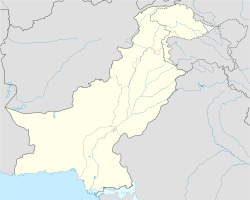Tari Mangal
|
Tari Mangal تری منگل Tari Mangal, Parachinar |
|
|---|---|
| City | |
| Location in Kurram Valley | |
| Coordinates: 33°58′N 69°53′E / 33.96°N 69.88°ECoordinates: 33°58′N 69°53′E / 33.96°N 69.88°E | |
| Country |
|
| State | Khyber Pakhtunkhwa |
| District | Kurram Valley |
| Government | |
| • Type | Frontier Crimes Regulations |
| Area | |
| • Total | 108 km2 (42 sq mi) |
| Elevation | 2,174 m (7,133 ft) |
| Population (2000) | |
| • Total | 3,000 |
| • Density | 28/km2 (72/sq mi) |
| Tribal | |
| • Language | Pushtu |
| Time zone | PKT (UTC+5) |
| Telephone code | 0926 |
| Vehicle registration | FATA |
| Distance from Parachinar | 23 kilometres (14 mi) |
| Avg. summer temperature | 13 °C (55 °F) |
| Avg. winter temperature | −2 °C (28 °F) |
|
A city on the border between Pakistan & Afghanistan |
|
A city on the border between Pakistan & Afghanistan
Tari Mangal (Urdu: تری منگل ) is a small city at Durand Line, near Safēd Kōh, which is a part of the Federally Administered Tribal Areas in Pakistan. Tari Mangal is 23 km away from Parachinar and 0.8 km far from Ali Mangal Post. The Pashtun tribe Mangal has been living in Tari Mangal since 1600 AD. From 1977-1988, during the Soviet-Afghan War, the city served as a Mujahideen camp. Weapons and funds from the United States, en route to Pakistan, were delivered to Afghanistan through the border at Tari Mangal, as well as its neighbouring region Torkham. Due to Tari Mangal's normal weather in summer, many people from hot areas in Pakistan visit Tari Mangal to enjoy cold weather.
Current-day Tari Mangal was control by the Mangal tribe when Shia Muslims arrived in the area. At that time, prior to the formation of an independent Pakistan, Tari Mangal was a part of Hindustan.
Tari Mangal, like Parachinar, was growing and thriving until war came to the area in 2007. Due to the Kurram Agency War April 2007, many government services were discontinued. For example, from 2007 to 2014, all government schools were closed. With the exception of the Government Girls Primary School, all have now reopened. There are now three schools in Tari Mangal:
Climate conditions in Tari Mangal are generally favorable. January and February are the harshest months due to snow, rain, and cold temperatures. Occasionally, heavy fog and cold air coming from the Safēd Kōh mountain range add to adverse weather conditions. From the middle of June to the middle of August, temperatures can be warm. During the rest of the year, however, the climate is moderate and considered to be ideal. Even in the summer months, there is generally no need for air conditioning or fans.
...
Wikipedia


